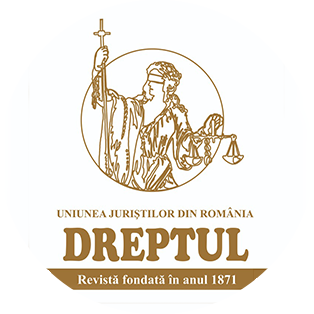-
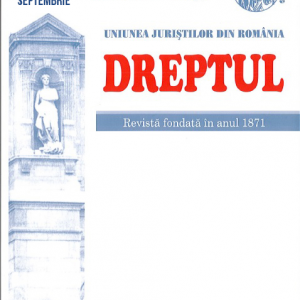 The current Civil Procedure Code clarifies some doctrinal controversies and controversies of the arbitral case law and transposes on legislative level some solutions of the arbitral practice, meant to make the arbitral jurisdiction more efficient. Among these aspects of making it more efficient, the study mentions those related to the extension of the competence of arbitration and the autonomy of will of the parties in organizing and conducting the arbitral procedure, likely to increase the access to this private jurisdiction, as an alternative to the state jurisdiction. Another dimension of the current regulation is related to the ways of materializing the arbitral convention and of the presumption of arbitrariness of the disputes regarding all misunderstandings arising from the contract or from the legal relations to which the agreement refers. The current regulation is concerned with the quality of the jurisdictional act which it connects to the qualification of the members of the arbitration tribunal, to their impartiality, by extending the causes of incompatibility as compared to those of judges and by guaranteeing the right to defence, by representing or assisting the parties by a lawyer. The autonomy of will, which impregnates the arbitral procedure, is associated with the principles of the civil trial, extended by the current regulation to the arbitral procedure, in order to increase the procedural guarantees offered by this private jurisdiction. An innovative solution is related to the participation of third parties in the arbitral procedure, under the terms of maintaining the composition of the arbitral tribunal, in order to ensure the complete and global settlement of the dispute. Another novelty of the current regulation is related to the material competence of the courts of appeal in resolving the action for annulment and the solutions that can be pronounced in case of admitting the action for annulment. Last but not least, the regulation makes the distinction between the procedure of the institutionalized and ad-hoc arbitration, in the context of the autonomy of will of the parties.
The current Civil Procedure Code clarifies some doctrinal controversies and controversies of the arbitral case law and transposes on legislative level some solutions of the arbitral practice, meant to make the arbitral jurisdiction more efficient. Among these aspects of making it more efficient, the study mentions those related to the extension of the competence of arbitration and the autonomy of will of the parties in organizing and conducting the arbitral procedure, likely to increase the access to this private jurisdiction, as an alternative to the state jurisdiction. Another dimension of the current regulation is related to the ways of materializing the arbitral convention and of the presumption of arbitrariness of the disputes regarding all misunderstandings arising from the contract or from the legal relations to which the agreement refers. The current regulation is concerned with the quality of the jurisdictional act which it connects to the qualification of the members of the arbitration tribunal, to their impartiality, by extending the causes of incompatibility as compared to those of judges and by guaranteeing the right to defence, by representing or assisting the parties by a lawyer. The autonomy of will, which impregnates the arbitral procedure, is associated with the principles of the civil trial, extended by the current regulation to the arbitral procedure, in order to increase the procedural guarantees offered by this private jurisdiction. An innovative solution is related to the participation of third parties in the arbitral procedure, under the terms of maintaining the composition of the arbitral tribunal, in order to ensure the complete and global settlement of the dispute. Another novelty of the current regulation is related to the material competence of the courts of appeal in resolving the action for annulment and the solutions that can be pronounced in case of admitting the action for annulment. Last but not least, the regulation makes the distinction between the procedure of the institutionalized and ad-hoc arbitration, in the context of the autonomy of will of the parties. -
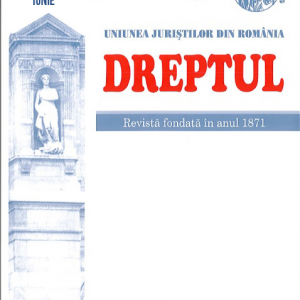 The author carries out a thorough analysis of all the regulations under art. 1381-1395 of the new Civil Code regarding the recovery of damages caused by extra-contractual causes. Thus, in the first part of the study, the author approaches joint liability, in case two or more persons are liable for one and the same damage. Also, a large part of the work deals with the principles governing the right and correlative obligation to recover the damages: the principle of full recovery and the principle of recovery in kind of the damages; both principles are explicitly provided in the texts of art. 1385 and 1386 of the new Civil Code. The central part of the work deals with a review of the recovery of damages by means of a money equivalent, referring in particular to the establishment of compensation for the full repair of personal injuries, both in their material and in their moral form; in the same context, large discussions are presented in relation to the pecuniary recovery of indirect damages. Another special place in the work is held by the presentation of the regulation regarding the correlation between the social security rights of the immediate or the indirect victim and the compensation that may be granted to such victim for recovery of the damages caused. The study ends with a review of the extinctive prescription of the right to claim and obtain in court the recovery of damages under tort liability.
The author carries out a thorough analysis of all the regulations under art. 1381-1395 of the new Civil Code regarding the recovery of damages caused by extra-contractual causes. Thus, in the first part of the study, the author approaches joint liability, in case two or more persons are liable for one and the same damage. Also, a large part of the work deals with the principles governing the right and correlative obligation to recover the damages: the principle of full recovery and the principle of recovery in kind of the damages; both principles are explicitly provided in the texts of art. 1385 and 1386 of the new Civil Code. The central part of the work deals with a review of the recovery of damages by means of a money equivalent, referring in particular to the establishment of compensation for the full repair of personal injuries, both in their material and in their moral form; in the same context, large discussions are presented in relation to the pecuniary recovery of indirect damages. Another special place in the work is held by the presentation of the regulation regarding the correlation between the social security rights of the immediate or the indirect victim and the compensation that may be granted to such victim for recovery of the damages caused. The study ends with a review of the extinctive prescription of the right to claim and obtain in court the recovery of damages under tort liability. -
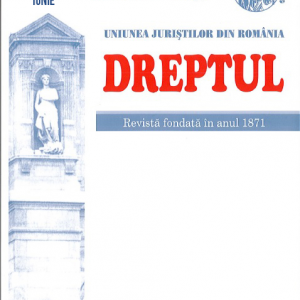 The author carries out a thorough analysis of all the regulations under art. 1381-1395 of the new Civil Code regarding the recovery of damages caused by extra-contractual causes. Thus, in the first part of the study, the author approaches joint liability, in case two or more persons are liable for one and the same damage. Also, a large part of the work deals with the principles governing the right and correlative obligation to recover the damages: the principle of full recovery and the principle of recovery in kind of the damages; both principles are explicitly provided in the texts of art. 1385 and 1386 of the new Civil Code. The central part of the work deals with a review of the recovery of damages by means of a money equivalent, referring in particular to the establishment of compensation for the full repair of personal injuries, both in their material and in their moral form; in the same context, large discussions are presented in relation to the pecuniary recovery of indirect damages. Another special place in the work is held by the presentation of the regulation regarding the correlation between the social security rights of the immediate or the indirect victim and the compensation that may be granted to such victim for recovery of the damages caused. The study ends with a review of the extinctive prescription of the right to claim and obtain in court the recovery of damages under tort liability.
The author carries out a thorough analysis of all the regulations under art. 1381-1395 of the new Civil Code regarding the recovery of damages caused by extra-contractual causes. Thus, in the first part of the study, the author approaches joint liability, in case two or more persons are liable for one and the same damage. Also, a large part of the work deals with the principles governing the right and correlative obligation to recover the damages: the principle of full recovery and the principle of recovery in kind of the damages; both principles are explicitly provided in the texts of art. 1385 and 1386 of the new Civil Code. The central part of the work deals with a review of the recovery of damages by means of a money equivalent, referring in particular to the establishment of compensation for the full repair of personal injuries, both in their material and in their moral form; in the same context, large discussions are presented in relation to the pecuniary recovery of indirect damages. Another special place in the work is held by the presentation of the regulation regarding the correlation between the social security rights of the immediate or the indirect victim and the compensation that may be granted to such victim for recovery of the damages caused. The study ends with a review of the extinctive prescription of the right to claim and obtain in court the recovery of damages under tort liability. -
 From the Decision No 42/2008 of the High Court of Cassation and Justice, United Sections, it emerges the rule cancellation excludes revocation in respect of which, given the finality of decisions in the interest of law to ensure a unitary practice, it must be admitted that the applicability is wider than the hypothesis that has generated it.
From the Decision No 42/2008 of the High Court of Cassation and Justice, United Sections, it emerges the rule cancellation excludes revocation in respect of which, given the finality of decisions in the interest of law to ensure a unitary practice, it must be admitted that the applicability is wider than the hypothesis that has generated it. -
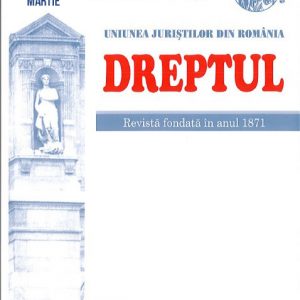 Starting with 25.05.2018 the Regulation (EU) No 679/2016, also referred to as Regulation on the protection of individuals with regard to the processing of personal data and on the free movement of such data has entered into force. This regulation, although replacing the previous applicable directive in the matter, respectively Directive 95/46/EC, taking over from its functioning principles, brings significant novelties from the point of view of the general framework in the matter of protection of personal data, circumstantiating and detailing many of the mandatory rules in the matter. By proposing to create a common framework at unional level, the Regulation No 679/2016 provides the necessary clarifications on the background of the galloping technological evolution and the accelerated growth of cross-border personal data flows. To that end, the aim pursued by the mentioned Regulation is to create a coherent and sound framework in the matter of data protection in the Union, in the context of a climate of confidence which will allow digital economy to expand on the internal market. It is, thus, intended to ensure that individuals benefit by a greater control over personal data, as well as to consolidate legal and practical security for the natural persons, the economic operators and the public authorities. Likewise, the Regulation strictly stipulates the premises in which any processing of personal data may be considered as being lawful and, thus, allowed, at the same time with the circumstantiation of the conditions in which the person concerned may be considered to have given his consent to the forecast processing. Also, a central element of the new European legislative initiative is to provide the necessary measures to ensure the transparency of the processing of personal data. In this respect, there are configured the obligations devolving on the operators of such data to inform the persons whose data are processed, as well as the cases and conditions in which the natural persons are entitled to rectify, erase or restrict the use of data concerning them.
Starting with 25.05.2018 the Regulation (EU) No 679/2016, also referred to as Regulation on the protection of individuals with regard to the processing of personal data and on the free movement of such data has entered into force. This regulation, although replacing the previous applicable directive in the matter, respectively Directive 95/46/EC, taking over from its functioning principles, brings significant novelties from the point of view of the general framework in the matter of protection of personal data, circumstantiating and detailing many of the mandatory rules in the matter. By proposing to create a common framework at unional level, the Regulation No 679/2016 provides the necessary clarifications on the background of the galloping technological evolution and the accelerated growth of cross-border personal data flows. To that end, the aim pursued by the mentioned Regulation is to create a coherent and sound framework in the matter of data protection in the Union, in the context of a climate of confidence which will allow digital economy to expand on the internal market. It is, thus, intended to ensure that individuals benefit by a greater control over personal data, as well as to consolidate legal and practical security for the natural persons, the economic operators and the public authorities. Likewise, the Regulation strictly stipulates the premises in which any processing of personal data may be considered as being lawful and, thus, allowed, at the same time with the circumstantiation of the conditions in which the person concerned may be considered to have given his consent to the forecast processing. Also, a central element of the new European legislative initiative is to provide the necessary measures to ensure the transparency of the processing of personal data. In this respect, there are configured the obligations devolving on the operators of such data to inform the persons whose data are processed, as well as the cases and conditions in which the natural persons are entitled to rectify, erase or restrict the use of data concerning them. -
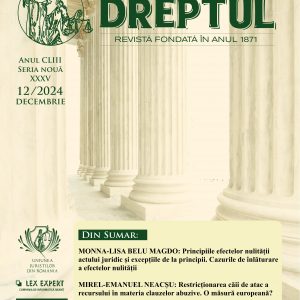
-
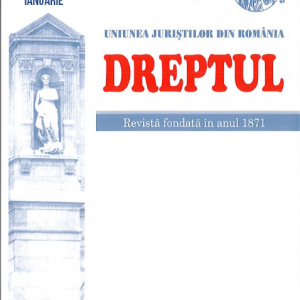 The new Romanian Civil Procedure Code has the indisputable merit of rebalancing the relationship between parties and courts, as well as dynamising the settlement of civil disputes. From both these perspectives, provisions of Article 200 of the Civil Procedure Code, pertaining to the check and regularisation of application for summons, mark a specific stage of solving some of the „prior” issues. Some of these not only notable but even surprising provisions will be further discussed.
The new Romanian Civil Procedure Code has the indisputable merit of rebalancing the relationship between parties and courts, as well as dynamising the settlement of civil disputes. From both these perspectives, provisions of Article 200 of the Civil Procedure Code, pertaining to the check and regularisation of application for summons, mark a specific stage of solving some of the „prior” issues. Some of these not only notable but even surprising provisions will be further discussed. -

-
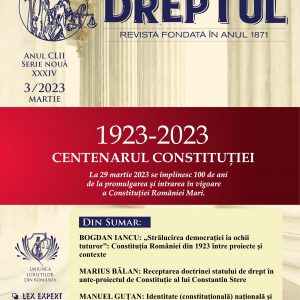
-
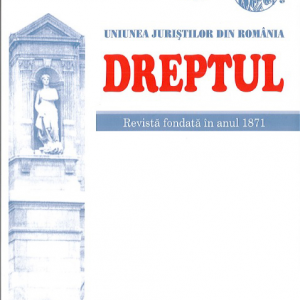 Conflictul negativ de competență este reglementat de art. 133 pct. 2 din Codul de procedură civilă, ce stabilește că există conflict de competență când două sau mai multe instanțe și-au declinat reciproc competența de a judeca același proces sau, în cazul declinărilor succesive, dacă ultima instanță învestită își declină la rândul său competența în favoarea uneia dintre instanțele care anterior s-au declarat necompetente.
Conflictul negativ de competență este reglementat de art. 133 pct. 2 din Codul de procedură civilă, ce stabilește că există conflict de competență când două sau mai multe instanțe și-au declinat reciproc competența de a judeca același proces sau, în cazul declinărilor succesive, dacă ultima instanță învestită își declină la rândul său competența în favoarea uneia dintre instanțele care anterior s-au declarat necompetente. -
 The elaboration of the notarial acts takes place in compliance with some requirements strictly provided in the normative acts. These requirements for the preparation of notarial acts are called rules for drawing up and affect to all notarial acts and actions. The topic covered in this paper is of interest to theorists and law practitioners from the Republic of Moldova and from Romania. In the Republic of Moldova there is a long process of formation and consolidation of notarial legislation. In the absence of a well-elaborated normative framework, the notaries public from the Republic of Moldova apply, here and there, the rules for drawing up the notarial acts inherited ever since the period of the Soviet Union. Another situation exists in Romania, whereas the legislator, by the Law No 36/1995, has established a stable normative framework for regulating notarial law relations. The main objective pursued by the author in the elaboration of the paper consists in the comparative analysis of the common rules for the drawing up the notarial acts through the Romanian and Moldavian legislation. The results of the research are manifested by formulating some conclusions and recommendations for amending the legislation. The theoretical implications of the study are relevant due to the diversity of the doctrinal sources used by the author. An increased attention was paid to Moldavian and Romanian researchers. In addition, the doctrine of the notarial law in the Russian Federation has been considered, which, over many decades, has become traditional in the Republic of Moldova.
The elaboration of the notarial acts takes place in compliance with some requirements strictly provided in the normative acts. These requirements for the preparation of notarial acts are called rules for drawing up and affect to all notarial acts and actions. The topic covered in this paper is of interest to theorists and law practitioners from the Republic of Moldova and from Romania. In the Republic of Moldova there is a long process of formation and consolidation of notarial legislation. In the absence of a well-elaborated normative framework, the notaries public from the Republic of Moldova apply, here and there, the rules for drawing up the notarial acts inherited ever since the period of the Soviet Union. Another situation exists in Romania, whereas the legislator, by the Law No 36/1995, has established a stable normative framework for regulating notarial law relations. The main objective pursued by the author in the elaboration of the paper consists in the comparative analysis of the common rules for the drawing up the notarial acts through the Romanian and Moldavian legislation. The results of the research are manifested by formulating some conclusions and recommendations for amending the legislation. The theoretical implications of the study are relevant due to the diversity of the doctrinal sources used by the author. An increased attention was paid to Moldavian and Romanian researchers. In addition, the doctrine of the notarial law in the Russian Federation has been considered, which, over many decades, has become traditional in the Republic of Moldova. -
 We are witnessing tremendous progress in the fields of biology and medicine, which consist the possibility to take human cells, tissues and organs for the purpose of their transplantation into another subject’s body, genetic engineering operations, medically assisted human procreation and many other such revolutionary techniques. All of these have proven to be two-edged weapons: on the one hand, they can be used to save lives or to help some couples who, under normal conditions, cannot procreate to give birth to the much-desired children and, on the other hand, they can turn into threats to the human genome or to the social cohesion. It has become necessary for man himself to be the object of legal protection, and, at the same time, a new category of things has emerged, namely the biological products of the human body and the elements detached therefrom, which are intended to be used for therapeutic or research purposes. Thus arose the problem of the legal qualification of these things, which also raised the issue of the existence of a relationship between the subject of law and his body. The doctrinaires are divided into two camps: one that considers that between the subject of law and his body, qualified as a thing, there is a legal relationship of property and another that claims that the human body is the person himself. The qualification of the human body as a thing, the transformation into things of some of its products and of some elements detached therefrom, as well as the possibility of capitalizing on some personality rights, such as the right to voice and the right to image, are part of a process which was called the reification of the person. It is a constantly evolving process which has already included the controversial gestation for another as well. The present study is devoted to the identification of the dangers generated by the qualification of the human body as a thing, with special regard to the gestation for another.
We are witnessing tremendous progress in the fields of biology and medicine, which consist the possibility to take human cells, tissues and organs for the purpose of their transplantation into another subject’s body, genetic engineering operations, medically assisted human procreation and many other such revolutionary techniques. All of these have proven to be two-edged weapons: on the one hand, they can be used to save lives or to help some couples who, under normal conditions, cannot procreate to give birth to the much-desired children and, on the other hand, they can turn into threats to the human genome or to the social cohesion. It has become necessary for man himself to be the object of legal protection, and, at the same time, a new category of things has emerged, namely the biological products of the human body and the elements detached therefrom, which are intended to be used for therapeutic or research purposes. Thus arose the problem of the legal qualification of these things, which also raised the issue of the existence of a relationship between the subject of law and his body. The doctrinaires are divided into two camps: one that considers that between the subject of law and his body, qualified as a thing, there is a legal relationship of property and another that claims that the human body is the person himself. The qualification of the human body as a thing, the transformation into things of some of its products and of some elements detached therefrom, as well as the possibility of capitalizing on some personality rights, such as the right to voice and the right to image, are part of a process which was called the reification of the person. It is a constantly evolving process which has already included the controversial gestation for another as well. The present study is devoted to the identification of the dangers generated by the qualification of the human body as a thing, with special regard to the gestation for another.
